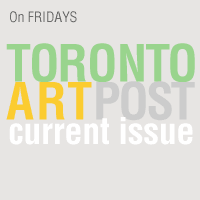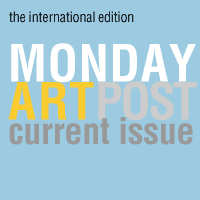
Vertical Panorama Imaging One will think immediately the formalistic approach as the only way of interpreting Ng Sai Kit’s vertical landscape photographs: his concurring usage of panorama flatback camera and setting the depth of field of each exposure in hyperfocal length distance maintain a disciplinary parallelism of vertical framed composition as well as maximum focusing sharpness within the entire series of black and white cityscapes.
To our ordinary vision it is not a common practice to embrace a 140 degrees (or more) field of vertical view, therefore the photographs printed here are an experimental gesture as different from Ng’s former horizontal ones (please refer to his web link: http://here-once-i-happentosee.com). Apart from the straight lines and grid likes of the urban architectures Ng also pays attention to the window reflections as a visual contrast with the concrete and the organic trees; the presence of human or even vehicles are subtle, his suggestion of traces of living is minimal or elusive in this sense.
Optical Unconscious The concept of ‘Optical Unconscious’ was first conceived in the essay ‘A Small History of Photography’ written by the German scholar Walter Benjamin in 1931; in light of the spectacle scientific images and slow motion pictures generated from magnifying lens and movie cameras he claimed, “… It is through photography that we first discover the existence of this optical unconscious, just as we discover the instinctual unconscious through psychoanalysis.” Benjamin’s choice of the dictums ‘optics’ or ‘optical’ underlay an impersonal or de-psychological unconscious of discovering the ‘realities’ made possible only by the aid of the modern cameras and lens apparatus. This instrumental connotation must be differentiate from ‘visual unconscious’; the camera technology in his sense paths the way to the visual (i.e. our eyes) and opens up a multi-dimensional modern gaze.
As a streetwalker stalking between different vertical horizons of our city, Ng has confided us with an ‘Optical Unconscious’, which is an all in focus world as delivered by the panorama camera. His vertical panoramas form a series of rebus and direct the viewers questioning the ambiguities of ‘reality’.
Architectural Photography Using the documentary photographic approach as a camouflage for his architectural photography Ng have triggered our everyday concept of our city through truncated cropping of buildings and surrounded spaces. Familiar places through his depiction at once become exotic or foreign. These significant abstract forms and chiaroscuros is a Gnostic approach to the common viewers and deny an easy access beyond the carefully orchestrated positive and negative spaces.
Ng’s strategic aesthetic experience changes the architectural discourse of “truths” and offers a notion of variations or instability of his photographed signs. Through an exploration on the mimetic relationship between urban architecture and photography (both are space organizing media) Ng have successfully created a sense of alienation from the represented urban signs. This puritanical form of visual criticism powered with metaphorical possibilities is a philosophical investigation of the contemporary photography language.
Synesthesia and Photography Ng’s ubiquitous presence of vertical photographs have expanded into the rural areas lately; in “Huangshen, China” (2005) the atmospheric perspective (the optical effect caused by light being absorbed and reflected by dust and moisture) dilutes the background tones and dissolves the mountains afar, thus added an artistic touch and resembles the visual effect of traditional Chinese landscape paintings or proletarian woodblock prints of the People’s Republic of China since the mid 40s. Distance in this sense is suggested by the gradual absent of forms and the mist implies a synthesis of aesthetics between Chinese art and modern photography.
Dissatisfied with a mere subscription to the traditional conventions of photo pictorialism, Ng have directed his new series into a story telling vertical theatre in which tourists among the landscapes are all depicted as involuntary ‘actors’; their individual body gestures, postures, movements and eye sights blended with the organic surrounding in a harmonic but dramatic manner which resembles a comprehensive slice of frame within a cinematic movie. This bold confrontation of the human subject is a new experiment of Ng and the self-reflective theatrical tableaux or docu-drama (documentary drama) demands us a reconsideration of the line between the ordinary life and photo re-presentation.
Spirit of the Void In his recent works from China trips we could see Ng’s propensity of driving intellectual tenets from his mother culture and a will to preserve it through a rekindle of traditional literati painting aesthetics through the contemporary lens medium. The inclusion of the clear sky as a key pictorial ingredient echoes the usage of the ‘Void’ element in traditional Chinese Art; this emphasis on the ‘Absence’ is a powerful springboard for the viewer’s own imagination. The ‘Void’ can be treated as a union of inner private souls with the broader spirit of the external Nature being photographed.
A possible development of this creative photographic trajectory in the future will depends on the artist’s understanding laws of the ‘Six Principles of Chinese painting’ which includes the ‘Spirit of Vitality’, ‘Anatomical Structure’, ‘Conformity with Nature’, ‘Suitability of Coloring’, ‘Transmission of Classic Models’ and ‘Artistic Arrangement’. The abstract and subliminal underpinnings of Chinese Art always impose a contrast with the ‘stability’ of the photographic symbols; Ng’s inescapable duty will be achieving an inspired confluence with both lens projections and our mental introjections.
Illuminating Silence “Silent Illumination” (默照禪) is a Zen meditation method advocated by the late Chan (Zen) Master Sheng-Yen (聖嚴法師) in which the seated practitioner brings total calmness or presence of silence and have a deep insight into the spacious and timelessness Nature as his / her awareness of the Self faded. This condition of “Emptiness” neglects the presence of the egoistic mind and allows a Direct Contemplation (直觀) to the world, addressing an intelligent beyond any personal discrimination.
As a discipline large format photographer with highly regulated body and mind during the shooting process since the last two decades, Ng can be regarded as an oriental philosopher creating in the domains of Zen-sual Zen-sibility. His photographs can be treated as works of meditative landscapes, the spell of his illuminating silence leads the viewers towards the realm of the ultimate Enlightenment.
Technological and Cultural Rationality Ng’s recent photographic tendencies of merging western and eastern art forms can be understood as a synthesis of both narrative configurations: whereas the modern western perspective of narration emphasizes on self-realization and rational or scientific reflection the eastern philosophy recommends a selflessness, metaphoric and poetic imaginations.
Ng’s vertical panoramas have embedded both technical and cultural rationality in which a marriage between the scientific instrument with a liberal usage of the cultural heritages of his historical precedent. To achieve a new topography or language of art photography in this hyper “conceptual” laden (or calculated) contemporary art market is a risky, timely and unrewarding venture, but that makes Ng’s enduring monumental visual investigations and spiritual journey a unique gem of our age.
(Compiled by Blues Wong)
found landscape
An exhibition by NG Sai Kit
April 27 through June 5, 2011
(Part of CONTACT Photography Festival 2011, Toronto)
Opening Reception: Saturday, April 30, (3-6 pm)
An exhibition presented by CHINESE CONTEMPORARY XCHANGE
INDEXG
50 Gladstone Avenue Toronto
Gallery Hours: 1-6 pm
(Wednesday to Sunday)
416.535.6957
INDEXG.com

















No comments:
Post a Comment